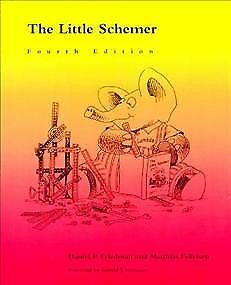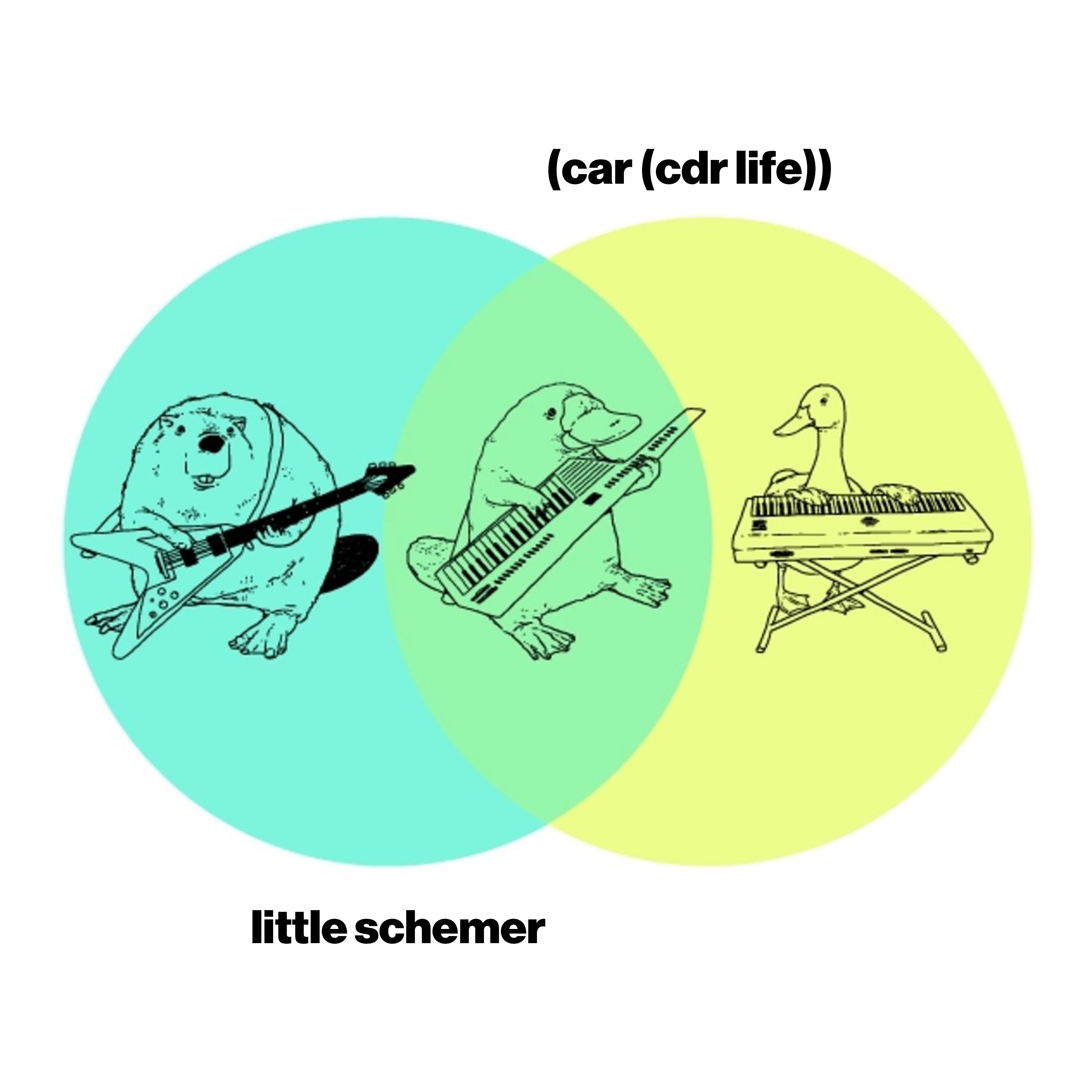The Little Schemer Reading Note Part I

Introduction
The Little Schemer is a great book writen by Daniel P. Friedman and Matthias Felleisen. The book introduced concepts in computer science and functional programming in Scheme/Lisp. It is about recursion at its core. (Check out the cover of the book and you will find out!)
The authors mentioned in the preface that:
The goal of this book is to teach the reader to think recursively.
I really love the way the book is structured by asking questions from simple examples and let the readers to think and grasp the concepts along the process. I don’t know about LISP or Scheme programing language beforehand but I was able to pick it up through its unique Q&A style of teaching (It’s fun and fascinating!).
Here is the table of contents of The Little Schemer. It’s pretty light in the first few chapters but quickly gets quite in depth. Especially in last few chapter about lambda and Y-combinator.
- Chapter 1: Toys
- Chapter 2: Do It, Do It Again, and Again, and Again…
- Chapter 3: Cons the Magnificent
- Chapter 4: Numbers Games
- Chapter 5: Oh My Gawd: It’s Full of Stars
- Chapter 6: Shadows
- Chapter 7: Shadows
- Chapter 8: Lambda the Ultimate
- Chapter 9: … and Again, and Again, and Again …
- Chapter 10: What Is the Value of All of This?
Resource to get started
Here are some resources I found very useful when I read through the book.
-
Two talks on YouTube given by David Christiansen and Andy Balaam.
-
The little schemer repo with code and examples in book
If you want to run Scheme/LISP on your computer without a Scheme interpreter. Here is a tutorial on how to do so through REPL.
Basic concepts
Ok, let’s get started! Today we are going through some basic concepts in the first few chapters and some great examples about how functions are defined using recursion. The first chapter talks about basic data types and operation. The second chapter introduces two recursive functions using those basic data types & operations.
Basic data types:
atom: The atom is the basic element in Scheme. An atom is a constant whose name is its own value.
list: We use parentheses () to specify list of values (S-expressions). For example, (a b c) is a list, ((a b c) x y z) is also a list.
S-expression: An S-expression is either an atom or a collection of S-expressions enclosed in parentheses. The second form of S-expressions are known as lists.
Basic functions:
car l: return the first element in the list. E.g. car (a b c) will give you a. The primitive car is defined only for non-empty lists.
cdr l: return a list consists of the rest of the list excluding its first element. The primitive cdr is defined only for non-empty lists. The cdr of any non-empty list will always return another list. E.g. cdr (a b c) will give you (b c).
cons a l: Concatenate between an atom a and a list l. The primitive cons takes two arguments and the second argument to cons must be a list. The result is also a list. E.g. cons a (b c) will give you (a b c).
null? l return ture if list is empty. The primitive null? is defined only for lists.
eq? a b: check if two element are equal.
lat? l: check if each S-expression in the list is an atom
member? a l : check if a is a member in l
rmember? a l: remove the first occurance of the atom a from the list l. E.g rember b (a b c b c) will return (a c b c).

Examples using recursion
Here is an example of how recursion is used almost everywhere in the function definitions:
- Definition of
latfunction (Chp2 p16)
(define lat?
(lambda (l)
(cond
((null? l) #t )
((atom? (car l)) (lat? (cdr l)))
(else #f))))
The idea to define lat function is recurion. It first takes a look at the first element in the list car l, if it is an atom, then we will keep using the same function lat on the rest of the list cdr l. If it’s not an atom we return False #f.
- Definition of
member?function (Chp2 p22)
(def member?
(lambda (a lat)
(cond
((null? lat) false)
(else (or (eq? (car lat) a)
(member? a (cdr lat)))))))
Similar to lat function, member looks at the first element car l in the list to check if it equals to a, then using the same function recursively on the other part of the list excluding first element cdr l.
Note that the first condition null? is very important because it serves as the termination condition to the recursion. It’s so important that it’s listed as the very first commandment in the book (There are 10 commandments in the book and we will talked about it later).
The First Commandment:
Always ask null? as the first question in expressing any function.
Also, by recursively using the same function on cdr lat, we are reducing the size of the input in this recursion. Each round of calling the function, we are shrinking the size of the list by 1 and getting closer to the termination condition null?. This is also covered in the fourth commandment:
The Fourth Commandment:
Always change at least one argument while recurring. It must be changed to be closer to termination. The changing argument must be tested in the termination condition: when using cdr, test the termination with null?.
- A little quiz here:
By using recursion, can you write your own definition for function
rember(remove the first occurance of the given atom from the given list)?
Here is the answer:
(define rember
(lambda (a lat)
(cond
((null? lat) (quote()))
((eq? (car lat) a) (cdr lat))
(else (cons (car lat)
(rember a (cdr lat)))))))
Up Next: In the part II we will talk more about recursion and lambda in this book. Stay tuned and may the recursion be with you!



Leave a comment